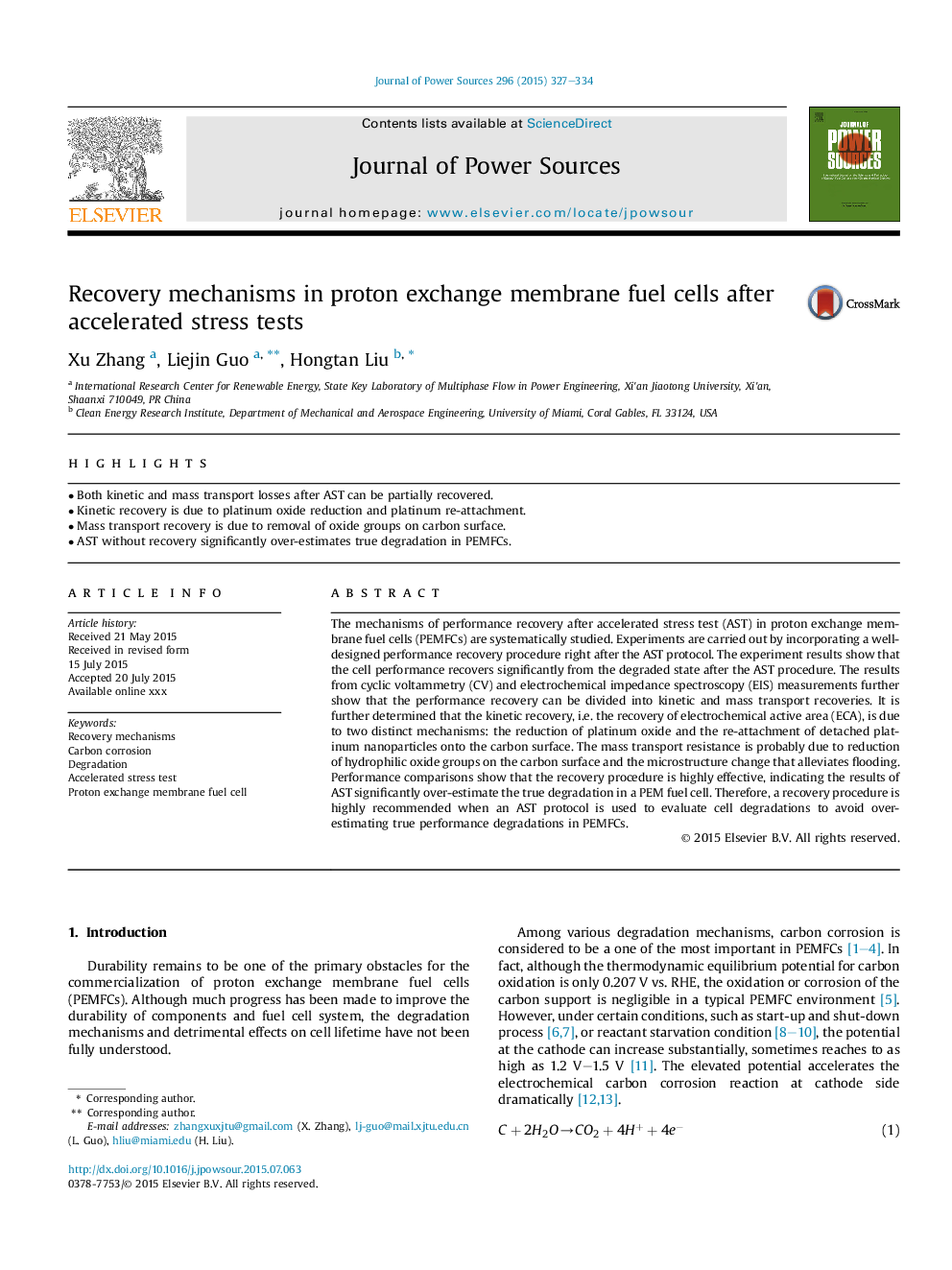| Article ID | Journal | Published Year | Pages | File Type |
|---|---|---|---|---|
| 7730416 | Journal of Power Sources | 2015 | 8 Pages |
Abstract
The mechanisms of performance recovery after accelerated stress test (AST) in proton exchange membrane fuel cells (PEMFCs) are systematically studied. Experiments are carried out by incorporating a well-designed performance recovery procedure right after the AST protocol. The experiment results show that the cell performance recovers significantly from the degraded state after the AST procedure. The results from cyclic voltammetry (CV) and electrochemical impedance spectroscopy (EIS) measurements further show that the performance recovery can be divided into kinetic and mass transport recoveries. It is further determined that the kinetic recovery, i.e. the recovery of electrochemical active area (ECA), is due to two distinct mechanisms: the reduction of platinum oxide and the re-attachment of detached platinum nanoparticles onto the carbon surface. The mass transport resistance is probably due to reduction of hydrophilic oxide groups on the carbon surface and the microstructure change that alleviates flooding. Performance comparisons show that the recovery procedure is highly effective, indicating the results of AST significantly over-estimate the true degradation in a PEM fuel cell. Therefore, a recovery procedure is highly recommended when an AST protocol is used to evaluate cell degradations to avoid over-estimating true performance degradations in PEMFCs.
Related Topics
Physical Sciences and Engineering
Chemistry
Electrochemistry
Authors
Xu Zhang, Liejin Guo, Hongtan Liu,
